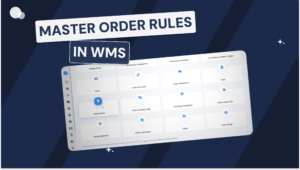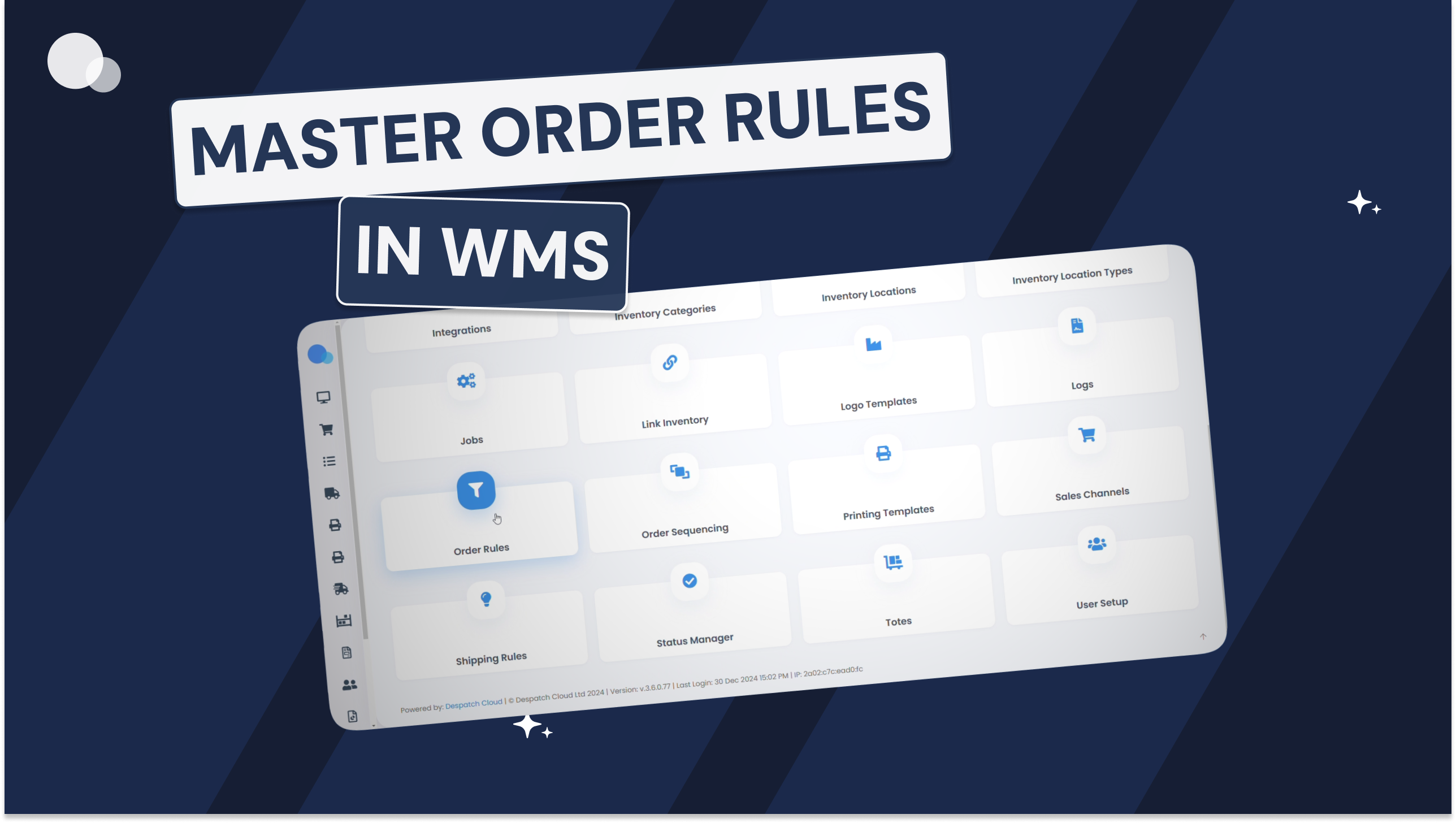Picture this: You’re running an eCommerce business, and orders are pouring in faster than you can say «package.» Keeping track of your inventory feels like herding cats – chaotic and exhausting. That’s where a Warehouse Management System swoops in. From inventory keeping to integrated pick and pack, WMS’s help streamline every aspect of your day-to-day operations, giving you unified control and visibility of your processes.
By optimising these daily operations, a WMS ensures that businesses can keep up with the demands of online shoppers for faster shipping and accurate order fulfilment. This becomes particularly crucial for many eCommerce ventures that initially store inventory at home due to high warehousing costs or the misconception of being too small to outsource.
Implementing a warehouse management system not only streamlines operations but also significantly reduces the time and cost associated with managing eCommerce warehouses. Whether it’s safeguarding against common warehousing pitfalls such as misplaced inventory and over-purchasing or enabling scalability through integration with third-party logistics (3PL) providers, the advantages are clear. Through this article, we delve into the key benefits of integrating a warehouse management system into your eCommerce strategy and how it can be the cornerstone of your online business’s success.
What is a Warehouse Management System?
When an online seller first starts, this information is often managed on paper, whiteboards, and spreadsheets. But as they grow it becomes more of a challenge to make sure they can pick, pack, and ship the right items to the right person, on time, every time.
That’s where we step in to help. A warehouse management solution helps streamline inventory tracking, order fulfilment, replenishment, and shipping processes within the warehouse or distribution centre. As the conductor in the fulfilment operation, a warehouse management system works as a centralised location for all your warehouse operations, simplifying processes and eliminating unnecessary complexities.
What are the benefits of a Warehouse Management System?
- Real-Time Inventory Management: With a WMS, you get the superpower of real-time inventory tracking. This means you can wave goodbye to the guesswork and ensure precise stock levels, automated inventory monitoring, and optimal stock for your needs. It’s all about keeping your business nimble and ready to meet demand without breaking a sweat.
- Streamlined Order Fulfilment: Imagine your orders flying out the door with accuracy and speed. That’s what a WMS does for you. It guides employees on the most efficient routes and packing methods, turning your warehouse into a well-oiled machine that gets orders processed and shipped faster than ever.
- Integrated Operations: A WMS isn’t just a standalone superhero; it teams up with your other business systems for an unbeatable combo. With seamless integration, you get a central command centre that syncs everything from purchasing to point of sale. This means better oversight, faster order processing, and a boost in sales workflow.
Why a Warehouse Management System might not be for you
- Limited Warehouse Operations: If your business operates on a small scale with minimal warehouse activities, investing in a full-fledged WMS might be overkill. Sometimes, simpler solutions or manual processes may suffice for managing your inventory.
- Budget Constraints: Implementing a WMS involves upfront costs for software, hardware, and training. If your budget is tight and you can’t justify the investment based on your current warehouse needs and growth projections, it might be wise to hold off on adopting a WMS.
- Complexity Overload: Some businesses thrive on simplicity and prefer straightforward operations. If the thought of navigating a complex WMS and integrating it into your existing systems feels overwhelming, it might be best to stick to your current processes until you’re ready for a more robust solution.
- Resistance to Change: Introducing a new system like a WMS requires buy-in from your team and a willingness to adapt to new workflows. If there’s resistance to change or a lack of enthusiasm for adopting new technologies, implementing a WMS could be challenging and potentially disruptive to your operations.
Top tips for choosing the Right Warehouse Management System
- Consult the Pros: First up, it’s a smart move to chat with experts who really know their stuff, like us folks at Despatch Cloud. We can help you tailor a WMS that fits your industry and business model like a glove, setting you up for smooth sailing.
- Business Needs & Growth Goals: Take a good, hard look at what your business needs right now and where you see it heading. This isn’t just about the present; it’s about gearing up for the future, too. You want a WMS that grows with you, not one that you’ll outgrow faster than a pair of school trousers.
- Integration is Key: You’ve got to make sure your new WMS can integrate with your current eCommerce and shipping providers whilst having the flexibility to scale and connect to other providers when the time is right.
- Accuracy and Training: We’re talking about how spot-on the system is and how much time you’ll need to get your team up to speed. Make sure your WMS provider has a solid onboarding strategy for a smoother and faster set up process.
- Real-Time Inventory Tracking: Keeping tabs on your stock like a hawk is a non-negotiable for keeping customers smiling and avoiding those dreaded stockouts. Make sure the tool you choose is up to scratch!
Top tips for Integration and Compatibility with Existing Systems
- Centralised Control: We’re talking about bringing everything under one roof. By integrating your WMS with your ecommerce platform, you’re creating a central hub for all your business processes. This means you can manage your inventory, fulfil orders, and keep customers happy, all from one place. It’s like having a command centre that gives you the power to oversee your entire ecommerce operation with ease.
- Seamless Syncing: Ecommerce platforms and WMS may be different beasts, but when they join forces, they’re unstoppable. Your ecommerce platform handles all the customer-facing stuff—like selling and marketing—while your WMS quietly takes care of inventory and order fulfilment in the background. When these systems talk to each other, you get real-time updates, which means no more inventory errors and a huge thumbs up for customer service.
- Seamless Syncing: Ecommerce platforms and WMS may be different beasts, but when they join forces, they’re unstoppable. Your ecommerce platform handles all the customer-facing stuff—like selling and marketing—while your WMS quietly takes care of inventory and order fulfilment in the background. When these systems talk to each other, you get real-time updates, which means no more inventory errors and a huge thumbs up for customer service.
- Autonomy Across the Board: Imagine having all the components of your ecommerce business—your website, warehouse, shipping, and marketing—talking to each other without you having to play middleman. That’s what integration does. It sets up your systems to work together autonomously, so you can focus on growing your business instead of getting bogged down in the nitty-gritty.
When it comes to the nuts and bolts of integration, you’ve got options:
- Integration Solutions: You can go with third-party integration services or software, which are like the matchmakers of the tech world. They introduce your systems to each other and get them communicating. Or, if you’re after something more tailored, you can opt for custom integration solutions that fit your business like a glove. nitty-gritty.
- Plug-and-Play Ease: For those of us who like things straightforward, pre-built integration modules or plugins can be a lifesaver. They’re like ready-made bridges between your systems, and with cloud-based WMS and ecommerce platforms, it’s like having a superhighway of data flowing between every part of your business.
- Custom Solutions: Sometimes, you’ve got to go bespoke. If there’s no existing solution that fits your needs, rolling up your sleeves and developing a custom solution can ensure your systems work together in perfect harmony.
By weaving together these integration strategies, we’re not just building a more efficient warehouse – we’re creating a seamless, customer-pleasing powerhouse that’s ready to take on the world of ecommerce. And the best part? We’re doing it together, as one integrated, unstoppable team.
So do you need Warehouse Management System?
For many online retailers, the integration of a Warehouse Management System (WMS) is not merely an enhancement but a critical investment, propelling eCommerce businesses towards operational excellence and a sharpened competitive edge. By leveraging the strengths of systems like Despatch Cloud, businesses gain the agility to manage real-time inventory, streamline order fulfilment, and synchronize their entire operational framework for sustained growth and efficiency.
With that said, the decision to implement a WMS should align with your business goals, operational needs, and readiness to embrace change. Depending on your unique business requirements, there may be alternative eCommerce solutions that could be more advantageous.
To truly understanding appreciate the transformative potential of such systems, consider taking the next step to test drive our Warehouse Management Software, and experience first hand just how far it can take your warehousing operations. Whether we’re a good match or not, it’s a great opportunity to better understand how (or if) a WMS fits into your current operation and the benefits you can get from it.
Book Your Personalised Demo
Learn more about how Warehousing can help you streamline warehouse processes and scale your eCommerce business with ease.






